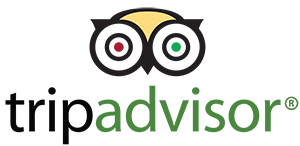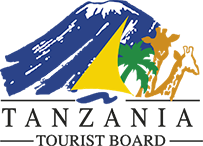Our Travel Tips
To climb Mount Kilimanjaro is a once in a lifetime opportunity. People travel from all over the world to stand on top of the Roof of Africa. Being properly prepared to climb Mount Kilimanjaro is the key to a successful summit attempt. In this article we discuss the 10 things you need to know before you climb Mount Kilimanjaro
- Determination
Getting to the top of Mount Kilimanjaro has a lot to do with determination. There will likely be a point during the summit attempt where you might feel like giving up typically around Stella Point or Gilman’s Point. You might be feeling awfully sick and exhausted. At that lowest point it is important that you remain determined to get to the top one step at a time!
Of course your determination must not supersede your health. Monitor AMS symptoms closely. Your guide will be monitoring you. It is important that you listen to your body and others in your group if they say that you need to descend.
Being prepared is key to success on Kilimanjaro
- Kilimanjaro Guides and Porters
The Kilimanjaro guides and porters are your greatest asset on the mountain. Most guides and porters are locals who speak Swahili. Guides usually have a good command of English.
Typically every climbing group has at least 1 guide, and each climber has three porters. Porters carry all gear, tents, cooking supplies and water. You will learn to respect these guys by the end of day one on your climb.
Each porter carries approx. 15kg of kit on their back.
- Water on Kilimanjaro
Water is critical on the mountain.
On day one you will be given 2-3 litres from your guide. During the climb porters will be collecting water to replenish supplies.
You should aim to drink at least 3 litres of water a day. Dehydration is a key cause of AMS so make sure you remain hydrated. You can add an energy supplement to your water to make it more palatable.
You must add water purification tablets to your water.
- Kilimanjaro Food
Eating well on Kilimanjaro is key to your success you’ll need the energy on summit night. Food is carried and prepared by your guiding team.
- Typically breakfast consists of tea / coffee, bread with spreads, porridge, sausage and eggs.
- Lunch usually includes soup, bread, a cooked stew or sandwiches. Dinner is similar to lunch.
Taking adequate snacks is important. Energy bars are a great idea. Plan to eat 3 a day.
One of the main symptoms of AMS is nausea and loss of appetite. If you experience these symptoms you must remember to try eating something to ensure that you have some energy reserves you can draw on during the summit. Eating a few biscuits helps!
- Acclimatization on Kilimanjaro
Given enough time the body adapts to changes in altitude. Some people experience worse altitude sickness symptoms than others.
There is no correlation between susceptibility to altitude sickness and factors of gender, age, fitness etc.
To prepare for altitude it is important that you understand the symptoms associated with Acute Mountain Sickness.
The three key things to remember are:
- Go slowly at all times, even on the lower reaches of the mountain
Do not exert yourself. You will hear the porters and guides say “Pole Pole”. This means ‘slow slow’ in Swahili. Make sure you listen and go slow
- Drink load of fluids
Dehydration is a key cause of Acute Mountain Sickness. The more fluids you can drink the better. Daily recommended intake is 3 litres of water. You can add an energy supplement to the water to make it taste better and always remember to add purification tablets.
- Climb high, sleep low
Climbing high, sleeping low allows your body to experience altitude for a short period before descending to sleep. On Kilimanjaro it is highly recommended to have an acclimatization day. Typically this happens on day 3 where you climb high (approx. 4,600m and sleep low approx. 3,900m)
- Kilimanjaro Weather – When to book your climb?
There are two rainy seasons on Kilimanjaro March through to end of May and November through to February. The south is wetter than the northern slopes, making the Rongai route a favorite during the rainy months.
Typically rain is less prevalent above 3,000m, which means you are only likely to experience rain on Day 1. You may however experience snow and sleet on the upper reaches of the mountain
- Kilimanjaro Routes
There are seven routes from which one can climb Mount Kilimanjaro.
The Machame, Umbwe and Marangu routes approach the summit from the South. The Rongai route which starts from the North East is dryer than the other routes and therefore a little less scenic. Because it is slightly out of the way the route is never overcrowded.
Some people start their climb from the East using the Lemosho and Shira route. Both are very scenic and beautiful.
The newest route is the Northern Circuit, which is also the longest route. The Northern Circuit provides lots of opportunity to acclimatize and hence success rates are high on this route.
Here is a complete overview on Kilimanjaro Routes
- Kilimanjaro Kit Requirements
We cannot stress enough the importance of having the right equipment to climb Mount Kilimanjaro.
The hike covers four climatic zones and therefore layering of clothes is key to staying warm and comfortable as you ascend. A base thermal layer, mid fleece layer and outer jacket is a must.
The right gloves and hiking boots are also critical.
Many hikers use trekking poles which are helpful for balance and take the pressure off your knees, especially when you descend.
The list of kit requirements is fairly lengthy. We recommend reading our detailed Kilimanjaro Packing List here.
- Climbing Skills on Kilimanjaro
To Climb Mount Kilimanjaro does not actually require any climbing skills. In fact, Kilimanjaro is just one big hike.
On the Machame, Lemosho, Shira and Umbwe Route there is one section called the Barranco Wall that requires very basic bouldering skills. No preparation is required for this section of the hike though.
- Fitness to climb Mount Kilimanjaro
There is a common misconception that you need to be super fit to be able to climb Mount Kilimanjaro. This is simply not true. In fact many fit people struggle to reach the summit because they exert themselves too much during the early stages of the trek and therefore don’t give themselves enough time to acclimatize during the ascent.
Of course having a good level of health and fitness is important for anyone wanting to climb Mount Kilimanjaro, but you don’t need to be an experienced marathon runner!
On Kilimanjaro you will be trekking approx. 5-7 hours a day (summit day being a lot longer). Preparing for these treks through practice hikes in your home country is a great way to build up your fitness level. If you don’t have time to do practice hikes our recommendation is to do basic cardiovascular exercises at the gym, such as running and cycling. This article gives detailed advice on training to climb Mount Kilimanjaro.




